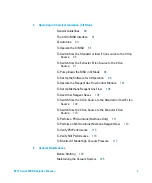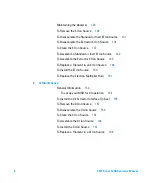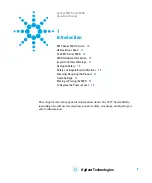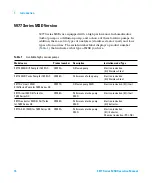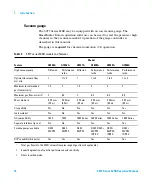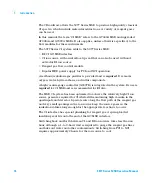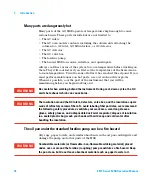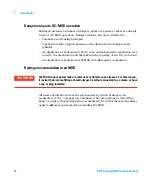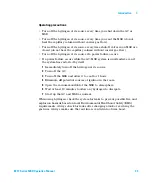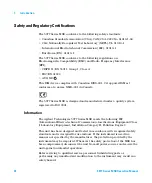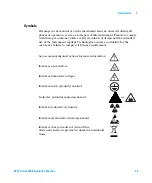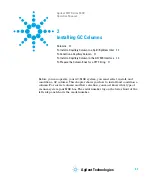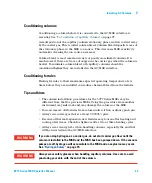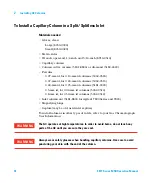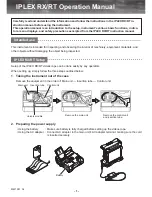
Introduction
1
5977 Series MSD Operation Manual
19
Hydrogen Safety
Hydrogen is a commonly used GC carrier gas. Hydrogen is potentially
explosive and has other dangerous characteristics:
•
Hydrogen is combustible over a wide range of concentrations. At
atmospheric pressure, hydrogen is combustible at concentrations from 4%
to 74.2% by volume.
•
Hydrogen has the highest burning velocity of any gas.
•
Hydrogen has a very low ignition energy.
•
Hydrogen that is allowed to expand rapidly from high pressure can
self-ignite.
•
Hydrogen burns with a non luminous flame which can be invisible under
bright light.
GC precautions
When using hydrogen as a carrier gas, remove the large round plastic cover for
the MSD transfer line located on the GC left side panel. In the unlikely event of
an explosion, this cover may dislodge.
WA R N I N G
Using hydrogen as a GC carrier gas is potentially dangerous.
WA R N I N G
When using hydrogen (H
2
) as the carrier gas or fuel gas, be aware that hydrogen
can flow into the GC oven and create an explosion hazard. Therefore, be sure that the
supply is turned off until all connections are made and ensure that the inlet and
detector column fittings are either connected to a column or capped at all times
when hydrogen is supplied to the instrument.
Hydrogen is flammable. Leaks, when confined in an enclosed space, may create a
fire or explosion hazard. In any application using hydrogen, leak test all
connections, lines, and valves before operating the instrument. Always turn off the
hydrogen supply at its source before working on the instrument.
Summary of Contents for G7035A
Page 1: ...Agilent Technologies Agilent 5977 Series MSD Operation Manual ...
Page 30: ...30 5977 Series MSD Operation Manual 1 Introduction ...
Page 88: ...88 5977 Series MSD Operation Manual 3 Operating in Electron Ionization EI Mode ...
Page 170: ...170 5977 Series MSD Operation Manual 6 CI Maintenance ...
Page 171: ......



